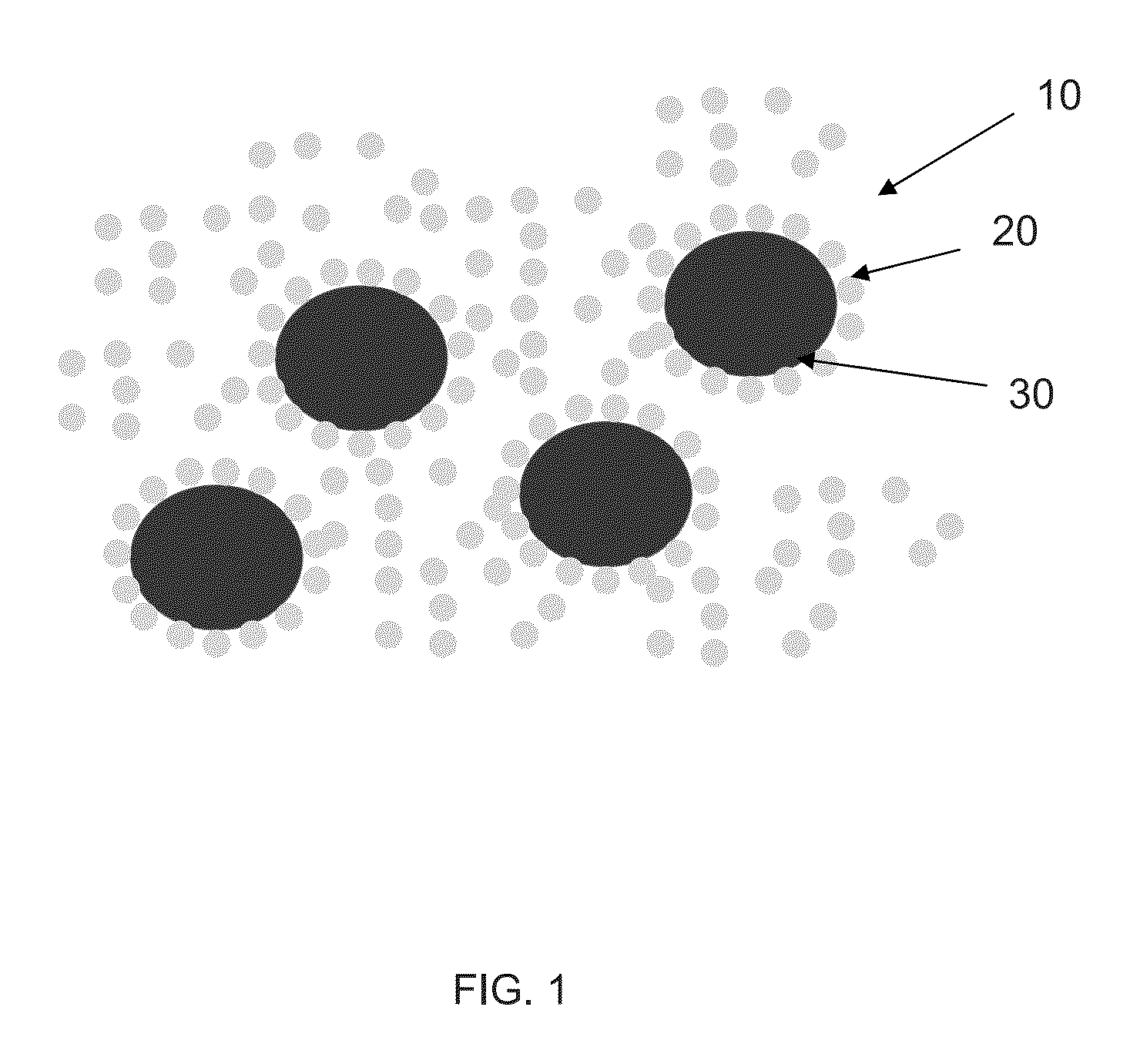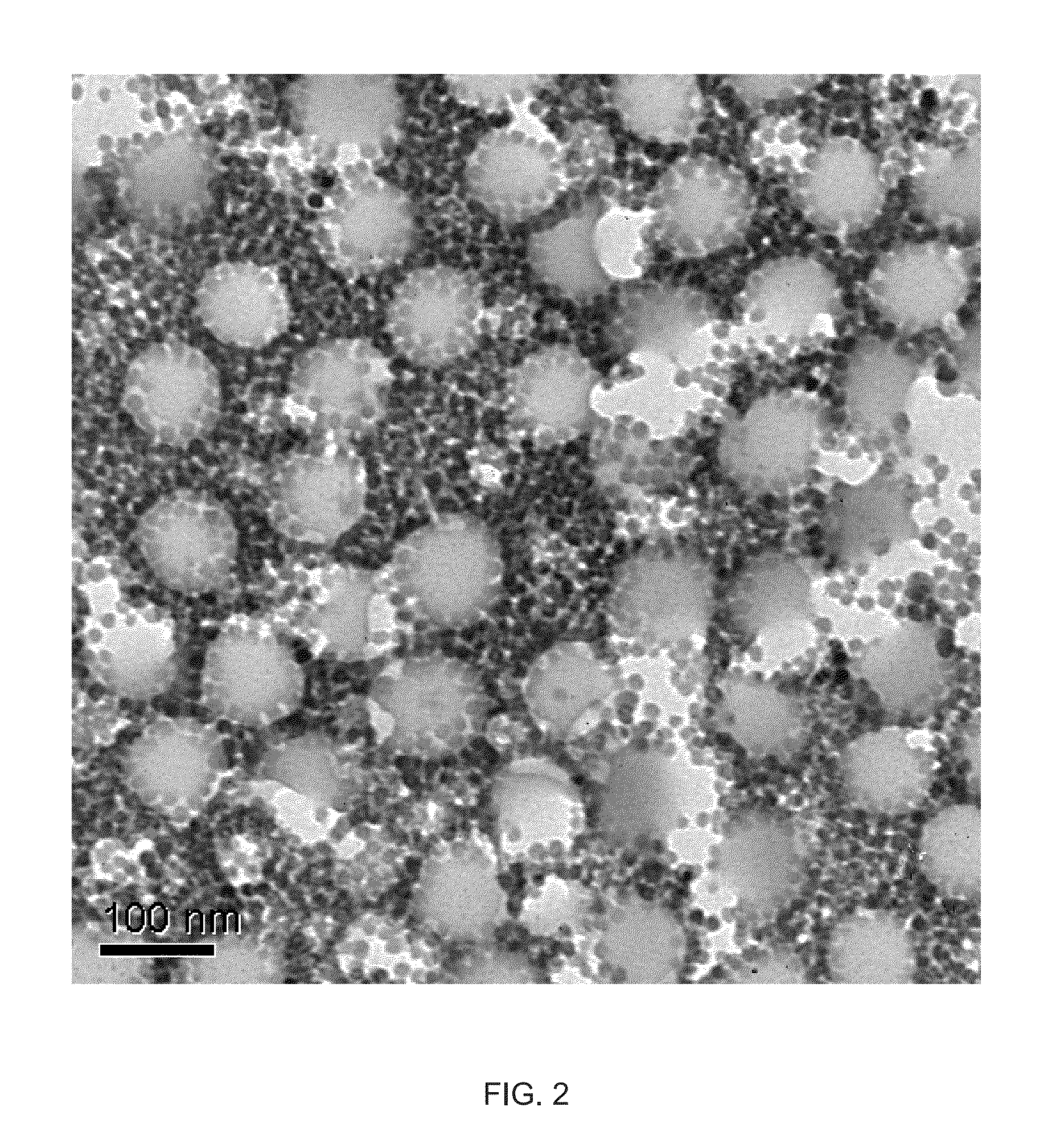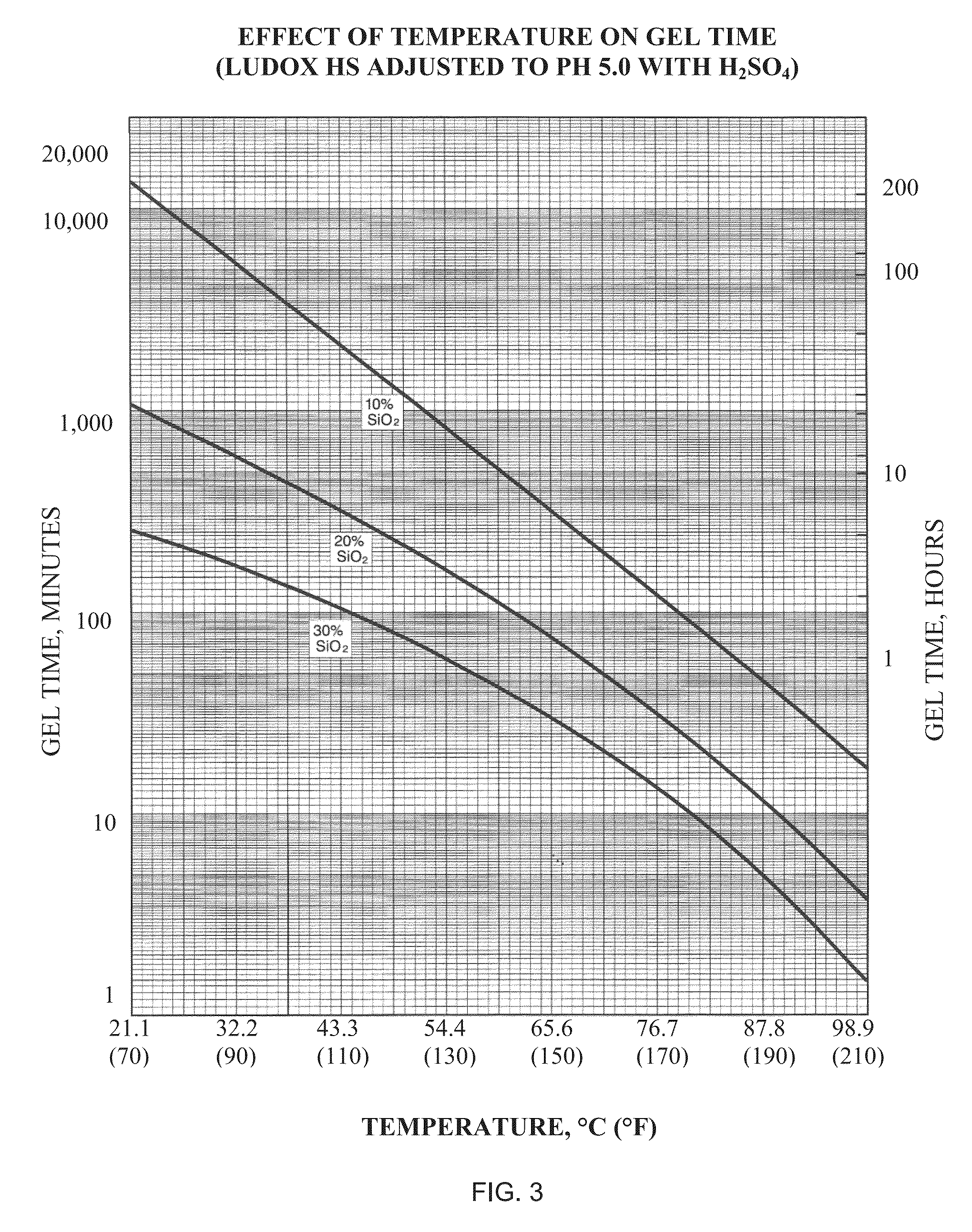Hybrid Organic-Inorganic Nanocomposites
a nanocomposites and organic technology, applied in the direction of silicon organic compounds, tyre parts, organic compounds of group 4/14 elements, etc., can solve the problems of lack of bonding between organic and inorganic phases, deficiency of each known process, low solid content, etc., to achieve low coagulation, high solid content, and low level of silica content
- Summary
- Abstract
- Description
- Claims
- Application Information
AI Technical Summary
Benefits of technology
Problems solved by technology
Method used
Image
Examples
example 1
Reacting Silica Nanoparticles with Trimethoxyvinylsilane
[0058]Example 1 concerns reactions, as described above in Equations (1) and (2), which lead to the surface modification of colloidal silica with trimethoxyvinylsilane. The reactions are carried out in a four-neck flask under nitrogen purge. The flask is equipped with a condenser, a thermometer, an agitator and a feeding pump. The flask is immersed in a water bath with a temperature control within about 0.1° C.
[0059]In a first reaction, described above in Equation (1), a quantity of 89.8 grams of Ludox® A30 (commercially available from W. R. Grace & Co. of Columbia, Md.), containing a dispersion of 30 wt. % silica nanoparticles having an average particle size of about 12 nm, were added to the reaction flask. With the agitator on, 6.2 grams of nitric acid, HNO3, (2.3M) were drop-wise added to the flask to adjust the pH to below about 3. The solution was heated to about 60° C.
[0060]In a separate beaker, about 3.0 grams of water, 0...
example 2
Reacting Silica Nanoparticles with 3-Methacryloxypropyltrimethoxysilane
[0061]Example 2 also concerns reactions, as described above in Equations (1) and (2), which lead to the surface modification of colloidal silica with 3-methacryloxypropyltrimethoxysilane. In a first reaction, described above in Equation (1), a quantity of 40.6 grams of Ludox AS-30, 39.5 grams of deionized water, 1.9 grams of RHODAPEX® CO-436 (an anionic surfactant), and 2.7 grams of nitric acid, HNO3, (2.3M) were mixed and heated to about 60° C. In a second reaction, described above in Equation (2), a quantity of 2.2 grams of 3-methacryloxypropyltrimethoxysilane (commercially available as Silquest® A-174NT from Momentive Performance Materials, Inc. of Albany, N.Y.) was added to the mixture and kept at about 60° C. for 2 hours. The total batch size was about 100 grams with 16.6% w / w nanosilica particles surfaced modified with 3-methacryloxypropyltrimethoxysilane. The 3-methacryloxypropyltrimethoxysilane modified s...
example 3
Preparation of a Hybrid Silica-Organic Polymer Nanocomposites through a Batch Process
[0062]Example 3 concerns the reaction of surface modified silica nanoparticles with organic monomers in the presence of an amine stabilizer, as described above in Equation (3). The emulsion polymerization was performed in the same equipment as in Example 1. Preliminary, in the reaction flask, 52.2 grams of the solution from Example 1 was mixed with 20.1 grams of deionized water, and 8 grams of 2-amino-2-methyl-1-propanol (an amine stabilizer). The solution was heated to about 60° C.
[0063]In a separate flask, a monomer emulsion was prepared by mixing 5.2 grams of water, 0.6 grams of RHODAPEX® CO-436 (an anionic surfactant), 13.6 grams of methyl methacrylate monomer, 0.1 gram of methacrylic acid monomer, and 0.1 gram of ammonium persulfate (an initiator). The emulsion was mixed with a magnetic stirrer until a stable emulsion was obtained.
[0064]The monomer emulsion was charged to the reaction flask, an...
PUM
| Property | Measurement | Unit |
|---|---|---|
| temperature | aaaaa | aaaaa |
| temperature | aaaaa | aaaaa |
| temperature | aaaaa | aaaaa |
Abstract
Description
Claims
Application Information
 Login to View More
Login to View More - R&D
- Intellectual Property
- Life Sciences
- Materials
- Tech Scout
- Unparalleled Data Quality
- Higher Quality Content
- 60% Fewer Hallucinations
Browse by: Latest US Patents, China's latest patents, Technical Efficacy Thesaurus, Application Domain, Technology Topic, Popular Technical Reports.
© 2025 PatSnap. All rights reserved.Legal|Privacy policy|Modern Slavery Act Transparency Statement|Sitemap|About US| Contact US: help@patsnap.com



